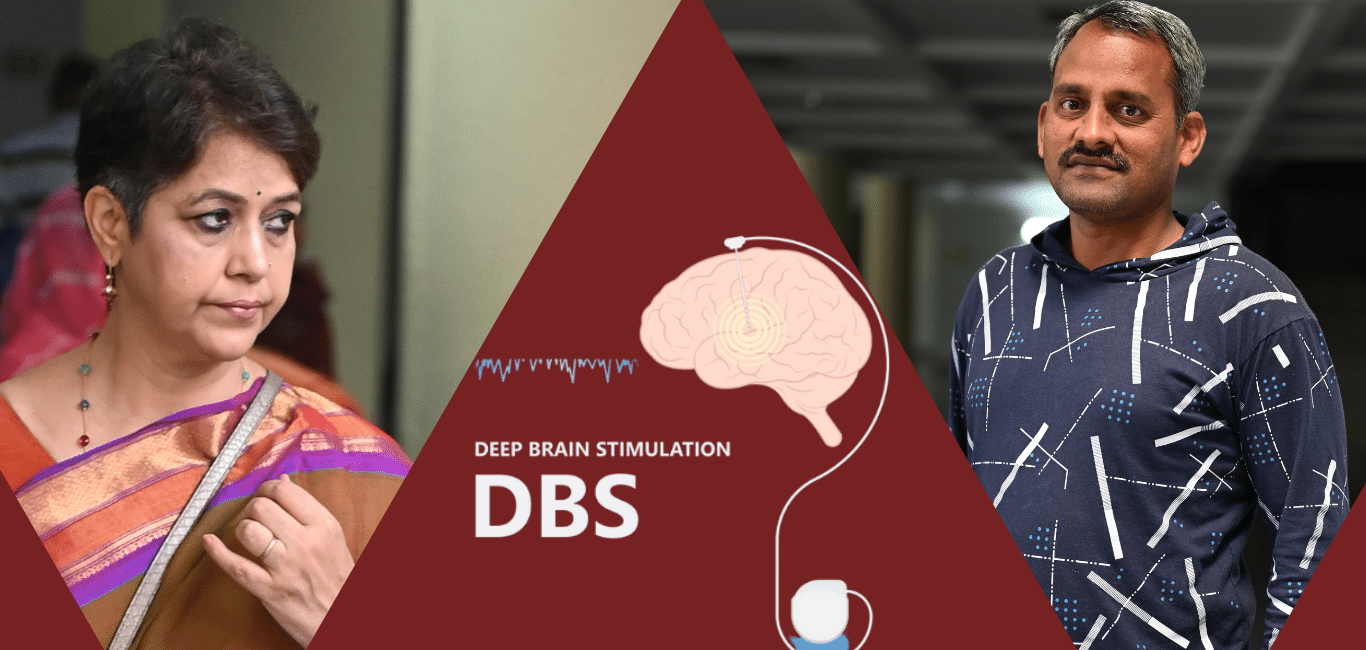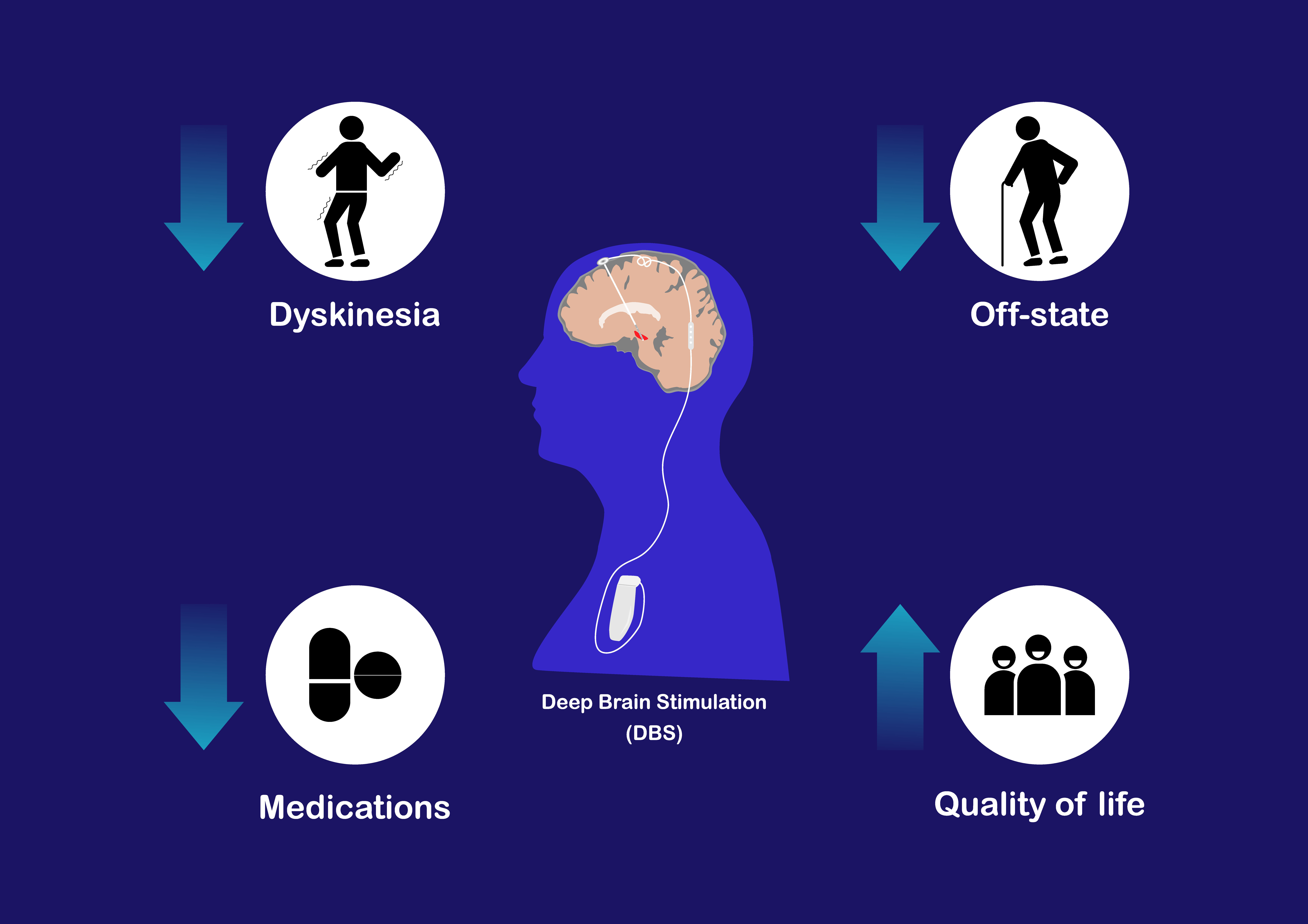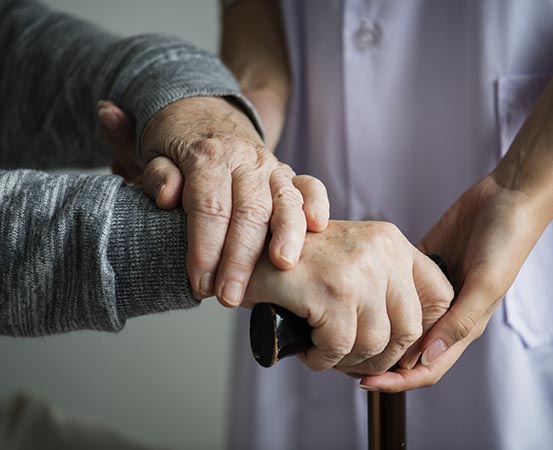
“As I sat in the doctor’s office in 2013, I was completely unaware of what was about to hit me. The doctor diagnosed me with Parkinson’s disease, a chronic and progressive neurological disorder that affects movement,” says Dr Nishi Singh.
“At first, the symptoms were affecting only one side of my body, but soon they became bilateral, and I struggled with the loss of swing in my right arm and leg,” recollects the 56-year-old founder-principal of a renowned school in Patna.
Parkinson’s disease brings in its wake uncontrolled shaking of the limbs, body or head, tremors, stiffness, frozen gait, and difficulties with balance and coordination. The neurodegenerative disorder is caused by a decrease in the brain hormone dopamine which is essential for body movement.
On World Parkinson’s Day organised by the National Institute of Mental Health and Neuroscience (NIMHANS), Bengaluru, on 2 April, Dr Singh spoke about her struggle before an audience.
She said that nine months ago, she underwent deep brain stimulation (DBS) to manage her symptoms of slow and frozen gait.
What is DBS?
The DBS kit is a device similar to a cardiac pacemaker. It has two electrodes and an impulse generator that works with the help of a battery.
Dr Rohan Mahale, neurosurgeon in the Department of Neurology, NIMHANS, says the components are surgically implanted in two stages. First, electrodes are implanted on each side of the brain. Then, the electrodes are connected to the pulse generator through a wire that runs down the neck, both of which are surgically inserted.
The electrodes are placed on the subthalamic nucleus, a brain region which manages and regulates body movements, Dr Mahale says.
Electrical stimulation of this region enables movement and relieves the freezing, slowness and tremors.
The device is externally monitored by both the doctor and the recipient. A low frequency (130-180 Hz) current of 2 to 4 V travels from the generator to the electrodes in the brain and stimulates the brain region.
Read more: Substantia nigra: its role in Parkinson’s
Implanting the device
The DBS kit includes two electrodes and a small battery-operated generator that is inserted under the skin below the collarbone. The DBS user must wear it constantly to receive the required electrical impulses or stimulation.
Guided by brain MRI scans, the neurosurgeon surgically inserts electrodes in the required area within the skull. The person getting the DBS kit is kept awake at this stage; the neurosurgeon needs their response for placing the electrodes accurately.
Once they are in place, the person is sedated and the electrodes are connected to a small electricity source or generator that is fixed near the neck.
The generator is adjusted to produce electrical impulses as required by the person. Care should be taken to keep the device intact and undamaged.

Screening candidates
Dr Ravi Yadav from the Department of Neurology, NIMHANS, says, “Not all patients require DBS; it is a tailor-made treatment. Sometimes, DBS is essential, but the primary treatment is [with] medicines.”
Even though the benefits of DBS outweigh the risks of the implant, it is essential to screen the candidates, experts say. They are assessed and rigorously evaluated by the following parameters:
- their age and the stage of the condition
- response to dopamine medication
- extent of the severity of tremors
- depression and other psychiatric disorders
Other factors are also taken into consideration. For example, persons with an unsteady gait may fall and damage the DBS device. This can put them at further risk, said Dr Mahale.
“Some of the side effects of using a deep brain stimulation device are weight gain and development of psychiatric conditions. In the best-case scenario, it has shown a 10 per cent risk,” he adds.
A guided path to recovery
Dr Singh is clear that DBS has given her a new lease of life. “The surgery was a success, and my symptoms reduced. DBS improved not only my physical health but also my mental health,” she says emphatically.
Bheesetti Ganesh, 41, a Border Security Force (BSF) personnel from Andhra Pradesh, is another beneficiary of DBS.
Ganesh noticed the symptoms in 2015: tremors and a loss of grip on his footwear. “My footwear started slipping off while walking. “Gradually, I noticed other physical disabilities, such as water dripping off my mouth when drinking, slurred speech, and uncontrolled rocking of my body,” he adds.
Eventually, he became dependent on family and friends for daily activities like eating, bathing and shaving. Neurologists at NIMHANS assured him that he would achieve 80 per cent recovery of motor functions with a DBS procedure when he consulted them in 2021.
“I am happy that I can walk well now,” Ganesh, who underwent DBS surgery in 2022, told Happiest Health. After the surgery, the tremors and involuntary shaking of the body have almost subsided.
“While there is scope for improvement in my gait, I carry out my daily activities independently,” he declares happily.
Is it a go-to solution for PD?
DBS helps to improve some of the symptoms associated with Parkinson’s, says Dr Ravi Yadav.
Dr Nitish Kamble, associate professor of neurology at NIMHANS, says, “DBS cannot completely reverse Parkinson’s. However, following DBS, the medication dosage can be reduced, or a single type of medication can be prescribed. But stopping all medicines is not advised.”
Living with DBS
Parkinson’s is a progressive condition and people having it will need all the support they can get from their associates. Dr Singh is grateful to the doctors who have put her back on track. She thanks her husband for his unstinted support. “He took great care of me, because of which I am able to stand here and have the courage to speak in front of you,” she said addressing the gathering of medical and non-medical professionals at the event.
Ganesh has resumed his national security duties. He proudly says, “Now I am posted [somewhere in the western region] and do three hours of night duty.”
He says he is immensely grateful to his friend and BSF colleague S Peddanna, 45, who has stood by him through his struggle with Parkinson’s. “I have to visit the hospital every three months for a checkup, and my friend always accompanies me on these visits.”
Acknowledging the constant support of his family and friends, he says, “Instead of dwelling on the discomforts of my symptoms, I am inspired to work for their sake.”
It may be a tough thing to follow, yet it is worth noting and taking heart from Dr Singh’s message to those with Parkinson’s:
“To conquer this long-lasting battle, we must learn to accept this disease, fall in love with ourselves, and develop a positive attitude towards life. Despite the challenges I have faced, I never let Parkinson’s define my potential.”

















